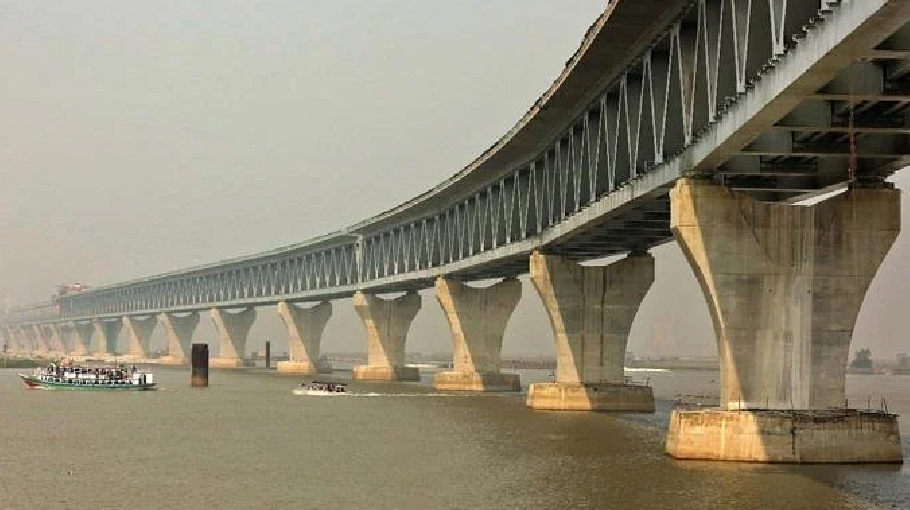Too heavy vehicles won’t ply Padma Bridge

From next week, vehicles weighing more than 27 tonnes will not be allowed to ply on the Padma Bridge.
Electric sensor-controlled weight measuring device Weight Scale has been installed at the bridge’s Zajira and Mawa ends to control vehicles exceeding the prescribed weight limit.
Experimental measurements are underway at both ends of the construction of the three-lane Weight scale.
The advanced electronic sensor-controlled weighing machines on both ends of the Padma Bridge to prevent overloaded vehicles is set up at a cost of Tk 692 crore by the contractor company Korean Expressway.
At the same time, motion cameras are installed to monitor the movement of vehicles. Installation of signal lights, digital display, and divider sign was also completed last week.
With these weighing scales the vehicle does not have to stand on a certain place, but rather the weight will be measured automatically while crossing the scales.
Confirming this, Bangladesh Bridge Authority (BBA) Chief Engineer Quazi Mohammad Ferdous said that until now all types of vehicles have crossed the Padma Bridge as there was no automatic weight measurement system.
However, the movement of vehicles weighing more than 27 tons is prohibited on Padma Bridge. And from next month it will be implemented.
Every goods laden vehicle coming from the Expressway on either side of the Padma Bridge has to come to Weight scale in three separate lanes designated before the toll plaza for weight measurement. The special lanes of the Weight scale must be crossed over the prescribed electric sensors and special weight measuring devices on the road.
Vehicles carrying weight up to 27 tonnes will cross the Padma bridge directly through the green zone after paying the toll.
And heavy vehicles will go through the red zone to the stockyard built next to the toll plaza. The vehicle will cross the Padma Bridge through the green zone after reducing the weight within 72 hours.
Excess products dropped in the stockyard must be collected within a maximum of seven days.




